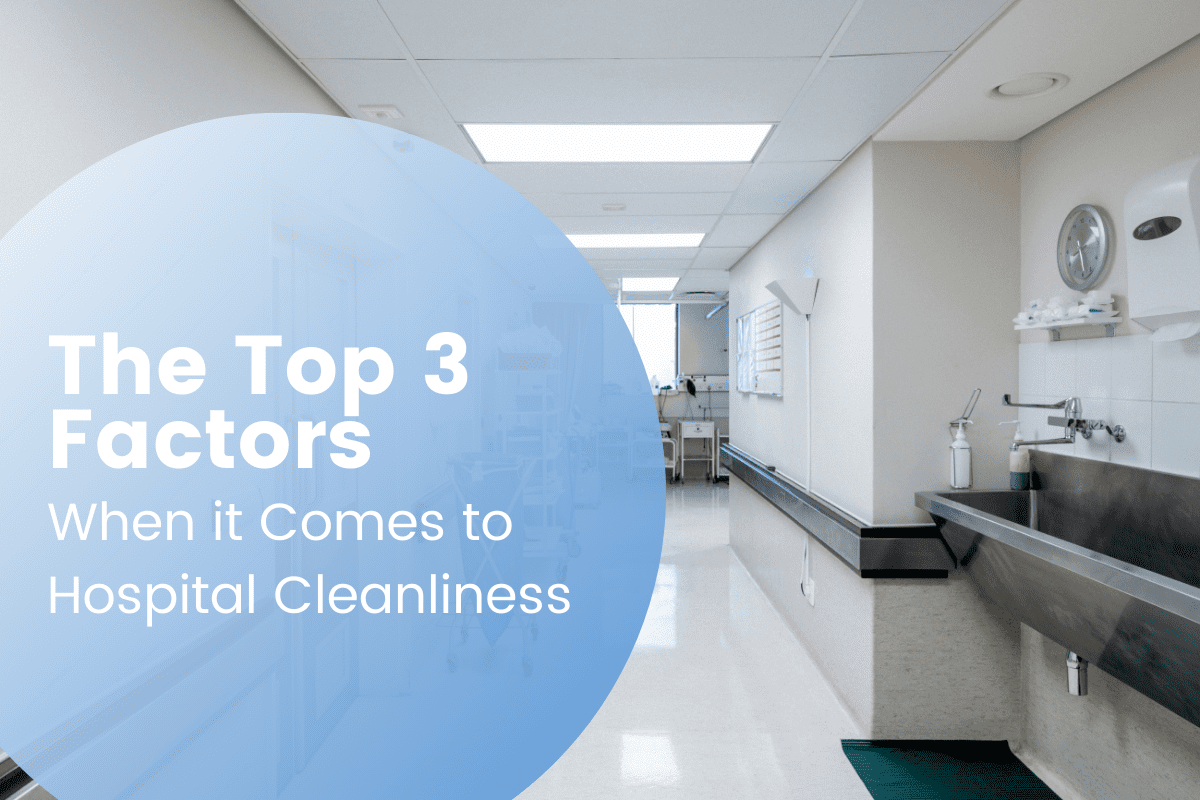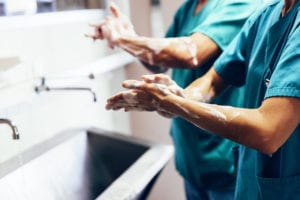
Each year, an estimated 722,000 patients in the U.S. are infected by hospital-acquired pathogens. This alarming statistic has motivated hospital organizations and healthcare professionals to consistently evaluate and reassess hospital cleaning methods. Although there exist many studies relating to the effectiveness of various hospital cleaning methods, there is no consensus on a single method proven to be most effective. As a manufacturer and supplier to the healthcare industry, Lakeside Manufacturing strives to stay up to date on hospital cleaning practices. We see facilities with all types of cleaning practices and want to share our insights on the top 3 factors that can set your hospital apart when it comes to hospital cleanliness.
#1 Hand Hygiene

A systematic review of 80 studies relating to hospital cleaning strategies concluded that although there are many proven ways to reduce the amount of pathogens in a hospital setting, there are not enough comparative studies to identify superior monitoring or disinfecting strategies. Health experts recommend a combination of proven methods to maintain a clean hospital environment and reduce Healthcare-Associated Infections (HAIs). However, a very consistent and principal factor in hospital cleanliness is hand washing practices. A 270 page report published by the WHO details various guidelines, hand-washing methods and hand washing agents that have been proven to mitigate the level of HAIs in hospital settings.
#2 Extra Attention for High Touch Surfaces
 Objects and surfaces in patient care areas that are handled frequently by several different users are more likely to be contaminated. According to a review of multiple studies, items that were most likely to be contaminated were privacy curtains, sinks, bed linens and hospital personnel clothing. These high-touch surfaces require extra attention as they can enable pathogens to cultivate and spread throughout the patient environment. Additionally, high mobility items such as hospital carts, food carts and IV stands should be sanitized diligently to prevent pathogen spread from one patient location to another. The CDC and the Healthcare Infection Control Practices Advisory Committee (HICPAC) recommend cleaning high touch surfaces more frequently.
Objects and surfaces in patient care areas that are handled frequently by several different users are more likely to be contaminated. According to a review of multiple studies, items that were most likely to be contaminated were privacy curtains, sinks, bed linens and hospital personnel clothing. These high-touch surfaces require extra attention as they can enable pathogens to cultivate and spread throughout the patient environment. Additionally, high mobility items such as hospital carts, food carts and IV stands should be sanitized diligently to prevent pathogen spread from one patient location to another. The CDC and the Healthcare Infection Control Practices Advisory Committee (HICPAC) recommend cleaning high touch surfaces more frequently.
#3 Cleaning According to Manufacturer Instructions
 Another key factor in hospital cleanliness was the ability for hospital staff to follow recommended sanitization instructions for items located in the hospital. Specific manufactured items such as IV stands, hospital machinery and hospital carts should be sanitized following the manufacturer’s instructions. Different types of pathogens exist for varying durations depending on the material and are best cleaned with methods specific to the item. Therefore, hospitals should pay close attention to these recommendations rather than using a single uniform method.
Another key factor in hospital cleanliness was the ability for hospital staff to follow recommended sanitization instructions for items located in the hospital. Specific manufactured items such as IV stands, hospital machinery and hospital carts should be sanitized following the manufacturer’s instructions. Different types of pathogens exist for varying durations depending on the material and are best cleaned with methods specific to the item. Therefore, hospitals should pay close attention to these recommendations rather than using a single uniform method.
The Importance of Patient Safety
With patient safety at the forefront, reducing the abundance of hazardous pathogens in the hospital environment is a clear way to improve patient outcomes. A lack of comparative studies makes it difficult to discern a clear best-practice for hospital cleaning, but practicing proper hand-hygiene, identifying and cleaning high-touch items, and following manufacturer’s cleaning instructions are proven methods to improving hospital cleanliness when performed simultaneously. At Lakeside Manufacturing, we feel it is important for all of us within the medical community to stay up to date on this topic. We aim to work with hospitals and manufacturers towards the shared goal of eliminating healthcare-associated infections. For more information on how to disinfect Lakeside products, review our page on cleaning stainless steel. We also welcome any feedback or additional information related to patient safety, cleaning practices or Lakeside products.